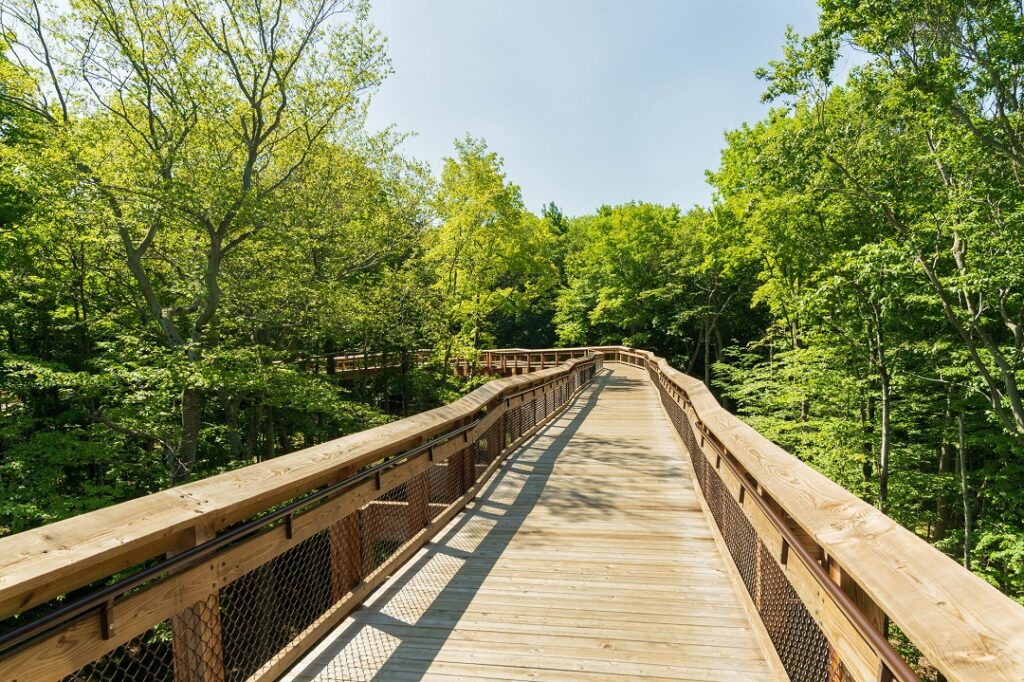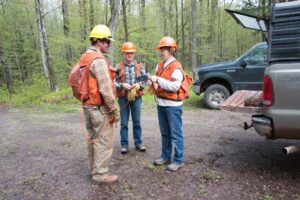DNR forest products staff work closely with businesses and organizations to use Wisconsin wood more profitably and effectively.
This work ranges from connecting buyers with suppliers of timber and other wood products, to directly assisting both rural and urban forest businesses to improve their profitability and marketing position. In addition, staff partner with members of the forest industry to host and teach workshops on lumber grading, kiln drying, workplace safety and marketing. They also provide technical assistance to improve mill productivity and product quality and collect data for assessing business development opportunities. Learn more about Wisconsin’s forest businesses here.

Forest Products Specialist assessing moisture uniformity of dried hardwood lumber during a mill assessment. Credit: Wisconsin DNR
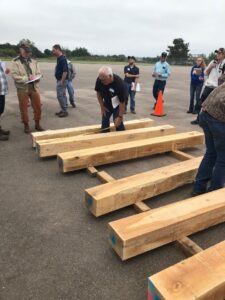
Participants practicing railway tie grading procedures at an industry workshop hosted by the Forest Products Services team. Credit: Wisconsin DNR

 I am very pleased to announce that Patricia Lindquist has accepted the North Central Regional Urban Forestry Coordinator position. Patricia’s first day was Nov. 8, and she is based in Wausau. She is very excited to be continuing her career at the DNR and taking on new challenges.
I am very pleased to announce that Patricia Lindquist has accepted the North Central Regional Urban Forestry Coordinator position. Patricia’s first day was Nov. 8, and she is based in Wausau. She is very excited to be continuing her career at the DNR and taking on new challenges. When I returned to my hometown neighborhood in northeast Ohio this past August, I was delighted to rekindle my friendship with so many trees that I have known most of my life. There are, of course, the Norway maples and crabapples and blue spruces found in maintained spaces throughout eastern America. One also finds a fair number of sugar maples and Ohio buckeyes. But despite apparently living in a democracy, red oak is king of my neighborhood.
When I returned to my hometown neighborhood in northeast Ohio this past August, I was delighted to rekindle my friendship with so many trees that I have known most of my life. There are, of course, the Norway maples and crabapples and blue spruces found in maintained spaces throughout eastern America. One also finds a fair number of sugar maples and Ohio buckeyes. But despite apparently living in a democracy, red oak is king of my neighborhood.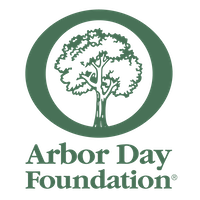 For years, the economic contribution of urban forestry has been lumped together with broader green industry numbers. Several years ago, the Wisconsin DNR took the lead in a Landscape Scale Restoration Grant-funded project for the Northeast-Midwest region looking at the contributions of urban forestry. Regional and state-level reports will be available in Spring 2022.
For years, the economic contribution of urban forestry has been lumped together with broader green industry numbers. Several years ago, the Wisconsin DNR took the lead in a Landscape Scale Restoration Grant-funded project for the Northeast-Midwest region looking at the contributions of urban forestry. Regional and state-level reports will be available in Spring 2022. 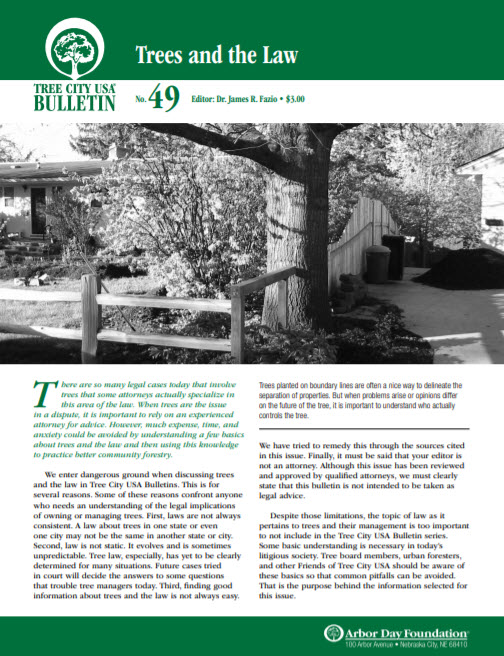 The Arbor Day Foundation publishes more than 100 Tree City USA Bulletins on a wide range of topics. They’re now available to download for FREE!
The Arbor Day Foundation publishes more than 100 Tree City USA Bulletins on a wide range of topics. They’re now available to download for FREE!
